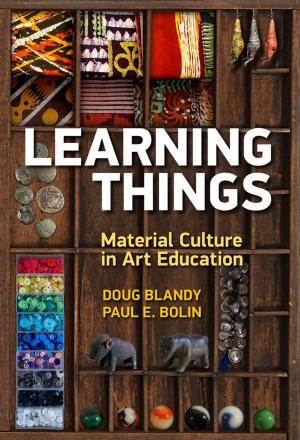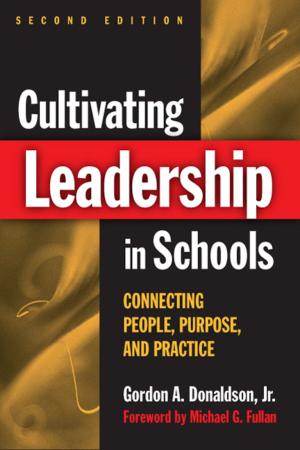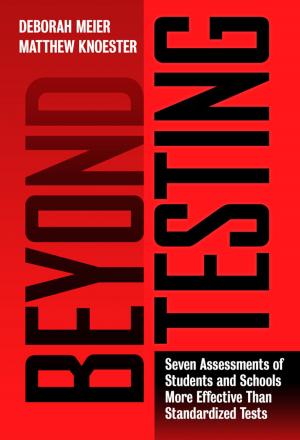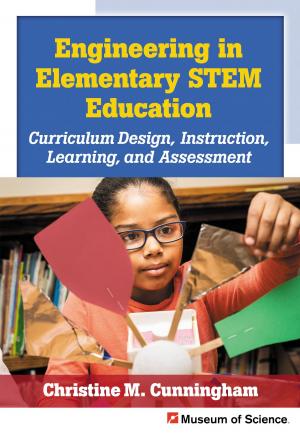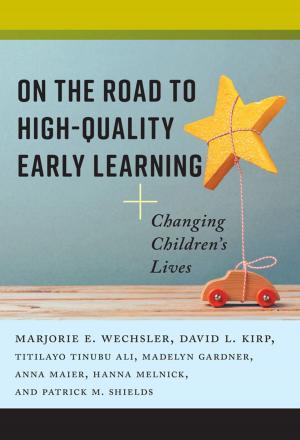Civic Education in the Elementary Grades
Promoting Student Engagement in an Era of Accountability
Nonfiction, Reference & Language, Education & Teaching, Elementary, Teaching, Teaching Methods| Author: | Dana Mitra, Stephanie C. Serriere | ISBN: | 9780807773451 |
| Publisher: | Teachers College Press | Publication: | December 15, 2009 |
| Imprint: | Language: | English |
| Author: | Dana Mitra, Stephanie C. Serriere |
| ISBN: | 9780807773451 |
| Publisher: | Teachers College Press |
| Publication: | December 15, 2009 |
| Imprint: | |
| Language: | English |
As former elementary school teachers, the authors focus on what is possible in schools rather than a romantic vision of what schools could be. Based on a 5-year study of an elementary school, this book shows how civic engagement can be purposive and critical—a way to encourage young people to examine their environment, to notice and question injustices, and to take action to make a difference in their communities and school. Focusing on the intersection of student voice and critical inquiry, the book describes how to embed civic engagement into curriculum, school decision-making processes, and whole-school activities. Chapters provide an overview of what research has demonstrated about civic engagement at the classroom, school, and community levels, including detailed descriptions of activities and lessons for practice. Classroom teachers, school principals, community members, and teacher educators can use this resource to foster a deeper, richer understanding of what is entailed in civic life.
Book Features:
- A vivid portrait of a “typical” public school that wants to do more than teach to the test.
- An examination of the conditions that enable young people to participate in democratic practices, including identifying and questioning injustices.
- Concrete examples of student voice and critical inquiry in classroom contexts.
- Practices and activities that encourage children to get along with others, exchange perspectives, and work across differences.
“Offers a suggestive range of evidence that high-quality civic engagement initiatives can enhance students’ academic, social, and emotional engagement. . . . It reveals the nitty-gritty of how experienced teachers can enable children who are immersed in meaningful civic work also to engage more deeply with mathematical problem-solving, peer collaboration, literacy and social studies learning, and development of empathy and mutual trust.”
—From the Foreword by Meira Levinson
“Mitra and Serriere show us not only that elementary-aged children are capable of civic engagement, but how such engagement can be nurtured in the classroom. Children can be active civic participants; this book demonstrates both the power of this idea and how we might accomplish this essential task.”
—Beth C. Rubin, Rutgers University
As former elementary school teachers, the authors focus on what is possible in schools rather than a romantic vision of what schools could be. Based on a 5-year study of an elementary school, this book shows how civic engagement can be purposive and critical—a way to encourage young people to examine their environment, to notice and question injustices, and to take action to make a difference in their communities and school. Focusing on the intersection of student voice and critical inquiry, the book describes how to embed civic engagement into curriculum, school decision-making processes, and whole-school activities. Chapters provide an overview of what research has demonstrated about civic engagement at the classroom, school, and community levels, including detailed descriptions of activities and lessons for practice. Classroom teachers, school principals, community members, and teacher educators can use this resource to foster a deeper, richer understanding of what is entailed in civic life.
Book Features:
- A vivid portrait of a “typical” public school that wants to do more than teach to the test.
- An examination of the conditions that enable young people to participate in democratic practices, including identifying and questioning injustices.
- Concrete examples of student voice and critical inquiry in classroom contexts.
- Practices and activities that encourage children to get along with others, exchange perspectives, and work across differences.
“Offers a suggestive range of evidence that high-quality civic engagement initiatives can enhance students’ academic, social, and emotional engagement. . . . It reveals the nitty-gritty of how experienced teachers can enable children who are immersed in meaningful civic work also to engage more deeply with mathematical problem-solving, peer collaboration, literacy and social studies learning, and development of empathy and mutual trust.”
—From the Foreword by Meira Levinson
“Mitra and Serriere show us not only that elementary-aged children are capable of civic engagement, but how such engagement can be nurtured in the classroom. Children can be active civic participants; this book demonstrates both the power of this idea and how we might accomplish this essential task.”
—Beth C. Rubin, Rutgers University


